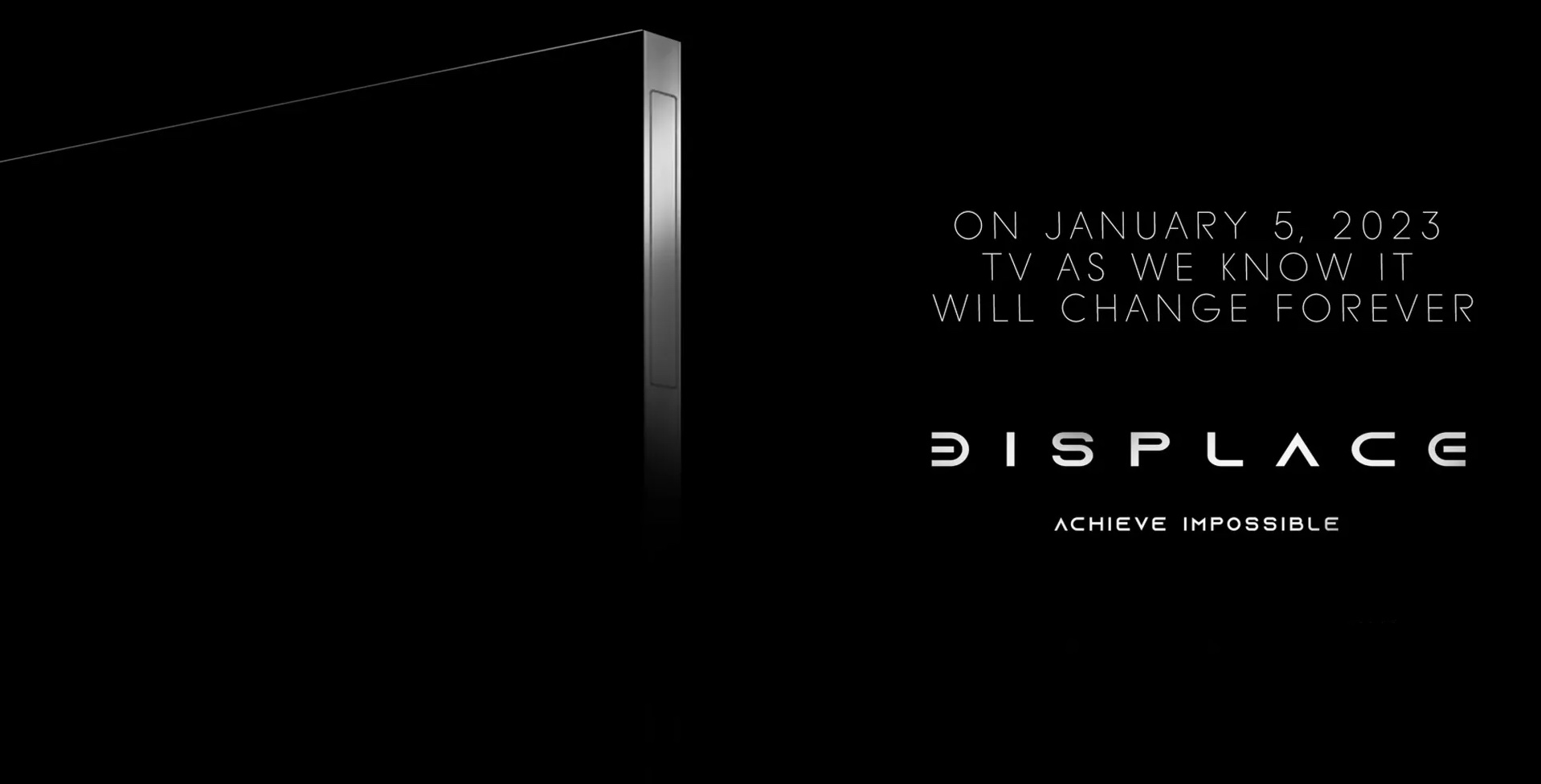
CES is usually the place where we see the latest, greatest and sometimes wildest innovations in technology, and this year’s event is shaping up to carry on that tradition. Case in point: there’s a company there that will be showing off “the world’s first” wireless OLED TV in Las Vegas.
The OLED in question is supposedly ultra-portable — weighing in at just 20 pounds — and can run off its proprietary battery back for around 30 days before it needs to be recharged. The TV itself is 55 inches and, according to the company that makes it, can be "easily secured to any surface with no mounting required" using its proprietary active-loop vacuum technology.
Even more interesting is the fact that the TV can be controlled using hand gestures in addition to touch and voice commands, and can be combined together to create a larger screen.
The TV will be made by a US company called Displace that, as you’d expect, has named its first product The Displace TV. According to Displace, the TV will be available starting in late 2023, with pre-orders opening up on its website starting on January 5, the day that CES 2023 starts.
How does a truly wireless OLED work?
Based on a press release sent to Tom’s Guide and information gathered by FlatPanels HD, Displace’s OLED doesn’t have much going on inside the TV. Instead, it requires a base station that’s plugged into an outlet and connected to Wi-Fi.
According to FlatPanels HD, that base unit is powered by an AMD CPU and Nvidia GPU, and has Wi-Fi 6E compatibility in order for it to stream to the TV itself.
So why hasn’t one of the big name manufacturers like Sony or LG done this before?
Sign up to get the BEST of Tom's Guide direct to your inbox.
Get instant access to breaking news, the hottest reviews, great deals and helpful tips.
There’s a few reasons, most likely. For one, it required the development of a proprietary battery back that can power the TV. According to Displace, that battery life is around 30 days with around 6 hours of viewing per day. However, the company didn’t say how long it would take to charge between uses.
The other issue is that the base station is both liberating for the TV…and also a tether that keeps it from going, say, with you to the beach. If it needs to be plugged into an outlet for the TV to work, then you'd never really be able to take it anywhere besides a backyard or into another room. That would be a huge drawback to what would otherwise be a pretty innovative product.
That being said, how the base station works in tandem with the TV isn't totally explained, but that’s something we’re likely to hear more about at CES.
As a reminder, CES 2023 starts on Wednesday, January 4, so stay tuned to Tom's Guide for coverage of the entire show. Check out our CES 2023 preview for more coverage.

Nick Pino heads up the TV and AV verticals at Tom's Guide and covers everything from OLED TVs to the latest wireless headphones. He was formerly the Senior Editor, TV and AV at TechRadar (Tom's Guide's sister site) and has previously written for GamesRadar, Official Xbox Magazine, PC Gamer and other outlets over the last decade. Not sure which TV you should buy? Drop him an email or tweet him on Twitter and he can help you out.
